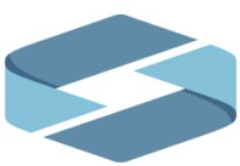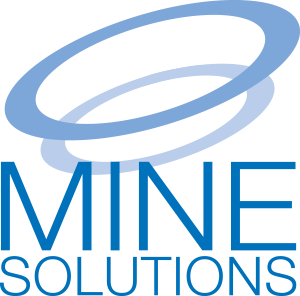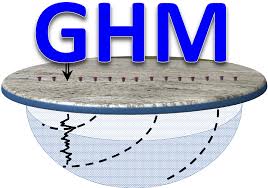Mineral exploration isn’t glamorous; it’s long days, spotty signals, and mountains of data that need wrangling. But with the right software, you cut through the noise. This piece looks at top solid options: suites that handle everything from logging holes to building 3D views. No sales pitch here, just what they bring to the table for folks like us who actually use this stuff.

1. FlyPix AI
We at FlyPix AI, built a platform to ease the slog of picking through aerial images for mineral leads. Our AI agents scan drone and satellite shots to spot things like altered rocks or fault traces, guiding exploration crews to areas worth checking out. You load up survey images, and our system sifts through them to flag potential targets, using models trained for specific ore types or quirky terrain. It’s made for those wide early sweeps when you need to cover ground fast and figure out where to point the drills.
We set it up so you don’t have to wrestle with code to tweak things – just tag a few examples, and our system learns to catch similar patterns in new data. For mining jobs, it’s handy for tracking how a site shifts over time or scoping out access routes from above, all linked to a cloud for sharing with the team. We’ve noticed it cuts down on the back-and-forth when double-checking what’s on the ground. Still, it’s not a stand-in for getting out there and poking the dirt yourself – it just helps you pick the right spot.
Key Highlights:
- Processes satellite and drone images for feature detection
- Trains custom AI models via user annotations
- Outlines geological structures in rasters
- Monitors site alterations over multiple surveys
- Shares analysis outputs through cloud collaboration
- Flags potential mineral targets in aerial data
Contact and Social Media Information:
- Website: flypix.ai
- Email: info@flypix.ai
- LinkedIn: www.linkedin.com/company/flypix-ai
- Address: Robert-Bosch-Str. 7, 64293 Darmstadt, Germany
- Phone: +49 6151 2776497

2. Datamine’s Exploration Suite
Exploration teams turn to Datamine’s suite when they need ways to pull together scattered data from the field. The tools cover steps like gathering observations during mapping or logging drill cores, linking that info into broader systems for storage and access. Workflows connect mobile apps to desktop setups, so entries from one spot feed directly into analysis without extra typing or lost notes. It’s set up for groups that deal with tenure tracking alongside geological logs, keeping things organized across projects.
Beyond basics, the suite supports reviewing geophysical data through maps and profiles, or building simple 3D twins of sites for spotting patterns. Teams use it to plan next moves, like where to drill or map next, and even share reports with outsiders. Communication tools help draft memos or updates, pulling in visuals from the data pool. Overall, it fits into daily routines where data flows from collection to decisions without big gaps.
Key Highlights:
- Handles data from field mapping and drill logging with metadata tags
- Links tools for tenure management and workflow tracking
- Supports 3D visualization for geological landscapes
- Includes options for geophysical data review via profiles and maps
- Aids in planning drill sites and mapping areas
- Facilitates report sharing for stakeholders
Contact and Social Media Information:
- Website: dataminesoftware.com
- LinkedIn: www.linkedin.com/company/dataminesw
- Address: Rumah Hanover, Queen Charlotte Street, Bristol, UK, BS1 4EX
- Phone: +441749683350

3. GEOREKA
GEOREKA stands out for teams wanting flexible 3D modeling without rigid setups. The software lets users build geological models using implicit or explicit methods, from cross-sections to basic interpolations like radial basis functions. It includes digitizing features and manual selections, so adjustments happen based on project needs rather than fixed templates. A viewer mode comes along for quick checks or team shares, turning full access into a lighter tool after trials.
In practice, it helps visualize trends in data, like mineralization patterns or fault lines, through editable surfaces and rough estimates. Users tweak grade shells with new inputs, keeping models current as info rolls in. The focus stays on exploration tasks, blending conventional approaches with tweaks for narrow veins or numeric fits. It’s the kind of kit that adapts when the ground throws curveballs.
Key Highlights:
- Offers implicit and explicit 3D geological modeling
- Includes numeric interpolation methods
- Supports digitizing and manual data picks
- Provides a viewer for collaboration and trend spotting
- Allows editing of surfaces like grade shells
- Handles narrow vein and fault modeling examples
Contact and Social Media Information:
- Website: www.georeka.com
- LinkedIn: www.linkedin.com/company/georeka-software

4. Vulcan by Maptek
Maptek’s Vulcan enters the mix for detailed geological modeling in exploration phases. It processes drill data into 3D structures, validating inputs before generating models for mine planning ties. Add-ons like GeologyCore streamline from raw samples to outputs, while cloud bits speed up resource estimates with machine learning on hole data. Laser scanning pairs with it for site surveys, turning point clouds into usable layers.
The setup extends to design and ops, but for exploration, it’s about accurate estimations from early data. Tools handle point clouds from drones or scanners, fitting them into broader workflows. It’s geared toward building scenarios that inform later steps, keeping data synced across desktop and cloud. Practical for sites where surveys feed right into model updates.
Key Highlights:
- Builds 3D geological models from drill data
- Validates and generates models in streamlined flows
- Uses cloud processing for resource estimates
- Integrates laser scanning for point cloud handling
- Supports drone data conversion to project layers
- Connects exploration to planning workflows
Contact and Social Media Information:
- Website: www.maptek.com
- Email: info@maptek.com
- Facebook: www.facebook.com/Maptek
- Twitter: x.com/maptek
- LinkedIn: www.linkedin.com/company/maptek
- Instagram: www.instagram.com/maptek.global
- Address: 14143 Denver West Parkway, Suite 200 Golden CO 80401
- Phone: +1-303-763-4919

5. GEOVIA Surpac
Teams handling early-stage mineral hunts often rely on GEOVIA Surpac for pulling together drill data into something usable. The software manages hole logs and runs basic stats to spot patterns in the ground, helping map out deposits with whatever info’s on hand. It ties in feeds from survey gear or GPS, so entries from the field slot right into bigger models without much fuss. Workflows cover open pits or underground setups, where users build block views of volumes and check spatial quirks in the rock.
On the flip side, it handles the grunt work of turning raw numbers into reports that regulators might glance at, or sketches for digging plans. Survey tools update site layouts from fresh measurements, tracking moves in material or boundaries. It’s the sort of thing that keeps data flowing from pickup to plan, especially when you’re juggling compliance alongside the geology. Nothing flashy, just steady for those long hauls between samples and decisions.
Key Highlights:
- Manages drillhole data and integrates survey inputs
- Runs geostatistical analysis for resource models
- Builds volumetric block models for open pit or underground
- Processes survey data for as-built geometry updates
- Calculates material volumes and boundary sets
- Supports outputs for regulatory and feasibility reports
Contact and Social Media Information:
- Website: www.3ds.com
- Facebook: www.facebook.com/DassaultSystemes
- Twitter: x.com/dassault3DS
- LinkedIn: www.linkedin.com/company/dassaultsystemes
- Address: 10, rue Marcel Dassault Paris Campus Vélizy-Villacoublay, 78140 France
- Phone: +33 (0)1 6162 6162

6. Micromine Origin
Micromine Origin steps in for groups knee-deep in exploration data, offering ways to visualize and tweak geological setups without starting from scratch each time. Users load in samples or logs to generate cross-sections or basic 3D frames, adjusting for trends as new bits come in. It links field notes to desktop reviews, so mapping or logging feeds straight into interpretations. The beyond add-ons extend to planning drills or checking tenures, keeping workflows tied together.
Deeper into it, the tools let teams run interpolations on grades or structures, spotting veins or faults that might hide under the surface. It’s practical for iterating models when the data’s messy – one tweak here, a re-run there. Folks mention it for bridging early hunts to later mine sketches, though it shines more in the fiddly bits of data cleanup. Keeps things moving without forcing square pegs into round holes.
Key Highlights:
- Visualizes geological data in cross-sections and 3D
- Supports interpolation for grade and structure modeling
- Integrates field logging with desktop analysis
- Aids in drill planning and tenure reviews
- Allows model iterations based on new samples
- Handles data cleanup for consistent interpretations
Contact and Social Media Information:
- Website: micromine.com
- E-mail: mmuk@micromine.com
- Address: Quadrant House 4 Thomas More Square London E1W 1YW
- Phone: +44 203 011 0552

7. Terraplus Geophysical Tools
Terraplus supplies gear that picks up signals from below ground, which exploration crews use to scan for mineral signs without always digging first. Magnetometers detect magnetic pulls from rocks, while EM setups measure conductivity to outline conductive zones. IP tools catch charge effects in soils, and borehole loggers detail what’s down holes already drilled. Seismic kits send waves to map layers, and GPR bounces radar for shallow looks.
These methods mix and match depending on the site – mags for broad sweeps, IP for sulfide hints. Teams pair them with software to plot results, turning beeps into maps that guide where to poke next. It’s hands-on stuff, out in the weather with carts or probes, but it cuts guesswork on what’s worth chasing. Not every tool fits every job, though; some spots call for one over another based on the terrain.
Key Highlights:
- Magnetometers for magnetic anomaly detection
- Electromagnetics for conductivity mapping
- Induced Polarization for chargeable mineral identification
- Borehole logging for detailed subsurface profiles
- Seismic methods for layer and structure imaging
- Ground Penetrating Radar for shallow subsurface scans
Contact and Social Media Information:
- Website: terraplus.ca
- E-mail: sales@terraplus.ca
- LinkedIn: www.linkedin.com/company/terraplus-inc
- Address: 120 West Beaver Creek Road, Unit #15 Richmond Hill, Ontario, Canada, L4B 1L2
- Phone: 1.905.764.5505

8. Trimble Geospatial Solutions
Exploration crews pick up Trimble’s geospatial kits when they need to nail down boundaries or map out sites before the heavy gear rolls in. Total stations and GNSS receivers handle the basics, like setting points for legal plots or running topo scans to sketch the lay of the land. Laser scanners grab 3D sweeps of rough terrain, feeding that into field apps for quick checks on the spot. It’s the sort of setup that lets you stake claims without second-guessing measurements, especially in spots where signals fade or the ground’s uneven.
Further along, the software side ties it together – cloud shares for passing files around, or office tools to crunch aerial shots from drones into layered maps. Teams use it for seismic layouts too, placing sensors where waves can reveal what’s buried without blind drilling. I’ve seen it keep projects on track when weather wipes a day’s work, just by logging everything digitally from the start. Keeps the focus on the rocks, not the rework.
Key Highlights:
- Uses total stations for scanning and robotic positioning
- Employs GNSS for integrated surveying and mapping
- Applies laser scanning for 3D imaging of sites
- Runs field software like Trimble Access for digital workflows
- Utilizes cloud platforms for data collaboration
- Processes aerial data with photogrammetry tools
Contact and Social Media Information:
- Website: geospatial.trimble.com
- Facebook: www.facebook.com/TrimbleSurvey
- LinkedIn: www.linkedin.com/showcase/trimble-geospatial
- Instagram: www.instagram.com/trimblegeospatial

9. Mine Solutions Extensions
Mine Solutions puts out add-ons that slot into Surpac for folks tweaking survey routines or ring designs in exploration phases. Tools like EzyRings handle blast patterns from early models, while the Mine Survey Office crunches numbers for volume checks on test pits. PonFarr might tweak decline paths for access plans, and FlexiSurv streamlines field picks into the main database. It’s niche stuff, mostly for when the core software needs a nudge to fit odd jobs.
These extensions run trials out of the box, so teams test them on real datasets without commitment. System Tools keep things humming under the hood, like scripting repetitive tasks. From what I’ve heard around sites, they save time on the fiddly bits that eat hours otherwise. Nothing revolutionary, but handy for keeping the flow when you’re deep in planning a scout drill line.
Key Highlights:
- EzyRings for blast ring generation in models
- Mine Survey Office for volume and survey calculations
- PonFarr for decline and access path adjustments
- FlexiSurv for field survey data integration
- System Tools for workflow scripting
- VCOMP for general compatibility tweaks
Contact and Social Media Information:
- Website: www.minesolutions.com
- E-mail: info@minesolutions.com
- Phone: +618 9312 6158

10. Geophysics HM Methods
Geophysics HM rolls out surveys that sniff out mineral hints through ground signals, targeting everything from gold veins to massive sulfides. Induced Polarization picks up chargeable ores like sulfides in VMS setups, while magnetics map iron-rich zones in magmatic deposits. Transient EM traces conductors in kimberlites, and gravity spots density shifts in iron sediments. It’s about layering methods to match the deposit type – radiometrics for uranium edges, magnetotellurics for deeper structures.
The crew interprets those reads to flag drill spots or outline known bodies, correlating signals with rock types for wider hunts. Porphyry coppers show up in zoned resistivity, SEDEX in sheet-like conductors. You get a sense from their notes that it’s as much art as science, chasing anomalies that line up with geology texts. Useful when surface clues run dry, but it takes knowing your ground to avoid false positives.
Key Highlights:
- Induced Polarization for sulfide and chargeable mineral detection
- Magnetics for magnetic anomaly mapping
- Transient EM for conductive body tracing
- Gravity for density contrast identification
- Magnetotellurics for subsurface resistivity profiling
- Radiometrics for radioactive element scanning
Contact and Social Media Information:
- Website: www.geophysicshm.com
- E-mail: info@geophysicshm.com
- Address: 51 Strachan Street E. Hamilton. Ontario. L8L3M3
- Phone: (365) 889 5400
Wrapping It Up
So, digging through all these mineral exploration tools, it’s clear they’re more than just gadgets – they’re the backbone for turning hunches into hard plans out in the field. From tools that stitch data into 3D maps to gear that sniffs out subsurface signals, each one tackles a piece of the puzzle, whether you’re logging cores or scanning from drones. I’ve been around enough sites to know that no single tool does it all; it’s about mixing them based on the ground you’re breaking. Sometimes a simple mag survey points the way, other times AI crunches aerial shots to spot trends you’d miss otherwise. At the end of the day, they cut down on the guesswork, letting teams focus on the real chase – finding that next viable deposit without wasting boots on barren rock.
Looking ahead, as tech keeps evolving, these kits will likely get smarter at handling messy real-world data, maybe even predicting risks before you drill. But remember, they’re only as good as the folks using them; a fancy model won’t save you from bad samples. If you’re gearing up for a project, poke around these options and see what fits your setup. Exploration’s tough enough without fighting your tools, right?
